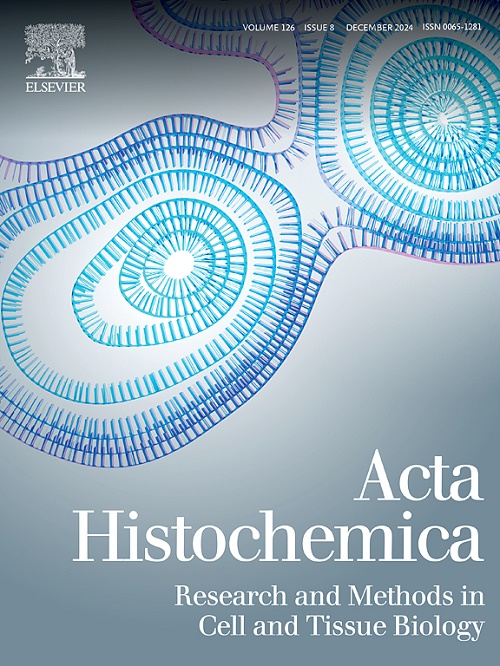Molecular signature-based labeling techniques for vascular endothelial cells
IF 2.4
4区 生物学
Q4 CELL BIOLOGY
引用次数: 0
Abstract
Vascular endothelial cells (VECs) play a crucial role in the development and maintenance of vascular biology specific to the tissue types. Molecular signature-based labeling and imaging of VECs help researchers understand potential mechanisms linking VECs to disease pathology, serving as valuable biomarkers in clinical settings and trials. Labeling techniques involve selectively tagging or marking VECs for visualization. Immunolabeled employs antibodies that specifically bind to VECs markers, while fluorescent tracers or dyes can directly label VECs for imaging. Some techniques use specific carbohydrate residues on cell surface, while others employ endothelial-specific promoters to express fluorescent proteins. Additionally, VEC can be labeled with contrast agents, radiolabeled tracers, and nanoparticles. The choice of labeling technique depends on study context, including whether it involves animal models, in vitro cell cultures, or clinical applications. Herein, we discussed the various labeling methods utilized to label VECs and the techniques to visualize them.
血管内皮细胞的分子标记技术。
血管内皮细胞(VECs)在血管生物学的发展和维持中起着至关重要的作用。基于分子特征的VECs标记和成像帮助研究人员了解将VECs与疾病病理联系起来的潜在机制,在临床环境和试验中作为有价值的生物标志物。标记技术包括选择性地标记或标记VECs以实现可视化。免疫标记使用特异性结合VECs标记的抗体,而荧光示踪剂或染料可以直接标记VECs进行成像。一些技术利用细胞表面特定的碳水化合物残基,而另一些技术则利用内皮特异性启动子来表达荧光蛋白。此外,VEC可以用造影剂、放射性示踪剂和纳米颗粒进行标记。标记技术的选择取决于研究背景,包括是否涉及动物模型、体外细胞培养或临床应用。在此,我们讨论了用于标记VECs的各种标记方法和可视化技术。
本文章由计算机程序翻译,如有差异,请以英文原文为准。
求助全文
约1分钟内获得全文
求助全文
来源期刊

Acta histochemica
生物-细胞生物学
CiteScore
4.60
自引率
4.00%
发文量
107
审稿时长
23 days
期刊介绍:
Acta histochemica, a journal of structural biochemistry of cells and tissues, publishes original research articles, short communications, reviews, letters to the editor, meeting reports and abstracts of meetings. The aim of the journal is to provide a forum for the cytochemical and histochemical research community in the life sciences, including cell biology, biotechnology, neurobiology, immunobiology, pathology, pharmacology, botany, zoology and environmental and toxicological research. The journal focuses on new developments in cytochemistry and histochemistry and their applications. Manuscripts reporting on studies of living cells and tissues are particularly welcome. Understanding the complexity of cells and tissues, i.e. their biocomplexity and biodiversity, is a major goal of the journal and reports on this topic are especially encouraged. Original research articles, short communications and reviews that report on new developments in cytochemistry and histochemistry are welcomed, especially when molecular biology is combined with the use of advanced microscopical techniques including image analysis and cytometry. Letters to the editor should comment or interpret previously published articles in the journal to trigger scientific discussions. Meeting reports are considered to be very important publications in the journal because they are excellent opportunities to present state-of-the-art overviews of fields in research where the developments are fast and hard to follow. Authors of meeting reports should consult the editors before writing a report. The editorial policy of the editors and the editorial board is rapid publication. Once a manuscript is received by one of the editors, an editorial decision about acceptance, revision or rejection will be taken within a month. It is the aim of the publishers to have a manuscript published within three months after the manuscript has been accepted
 求助内容:
求助内容: 应助结果提醒方式:
应助结果提醒方式:


